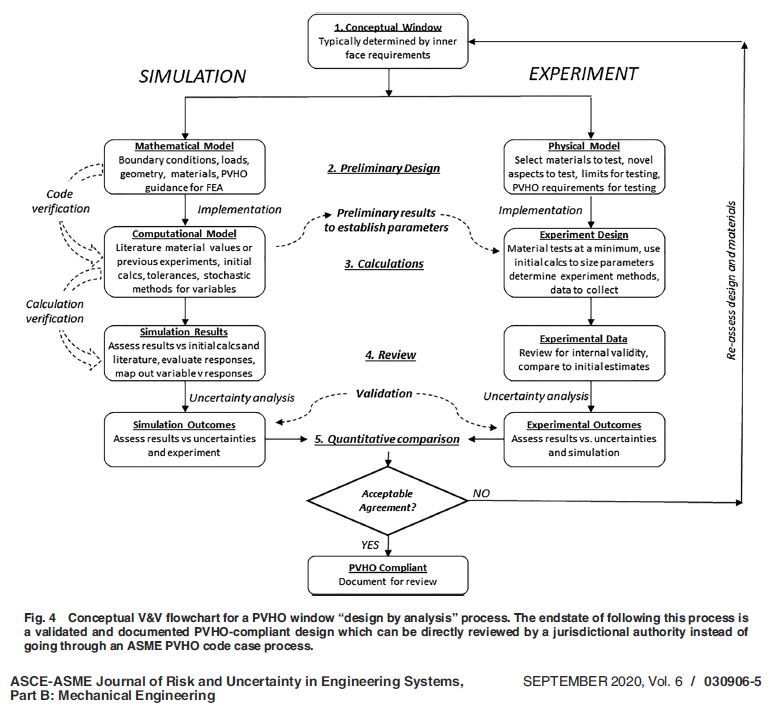Bart Kemper, P.E. and Linda Cross, P.E. have co-authored a paper outlining the framework for developing a “design by analysis” methodology for glassy polymers. The article will be formally released in the September 2020 edition of the ASCE-ASME Journal of Risk and Uncertainty in Engineering Systems (Part B: Mechanical Engineering). This journal was selected to the range of conditions that must be addressed, from a carefully controlled medical treatment facility (medical hyperbaric chamber) to the rigors of deep-diving systems of diving bells and submarines, with the same system potentially operating in the tropics or in arctic conditions.
The current methodology is an empirical method constrained to specific shapes and conditions. There is no direct calculation of deflection, stress, strain, or other typical engineering method that allows one to adapt to new materials, conditions, or shapes. This prevents designs that were not expressly accounted for in the early 1970’s when the landmark work established the current system. The original design methodology was not only innovative, it has proven to be safe and reliable, setting the baseline for acceptable design practice. The challenge is the original design methodology is locked into a closed loop based on experimentation and simplifying assumptions. This paper provides a pathway to develop a new system that supplements the original methods by allowing more rigorous engineering to be used in lieu of the empirical method. As one potential application, it could allow medical chambers in a protected environment to be optimized for thinner (and less expensive) windows due to not needing the robust design margin of a commercial diving bell.
One of the exciting aspects of this is its potential beyond PVHO. A “design by analysis” methodology that can address the complexities of a submarine or diving bell window in a safe and reliable method can also be used for aquaria, aerospace, and even architectural applications. A key element of the proposed methodology is incorporating an active risk assessment to establish the design margins. Another key element is the use of Verification and Validation (V&V) and stochastic computer models to ensure the design fully documents how the end product meets the design intent despite a complex operating environment.
ABSTRACT: The ASME pressure vessels for human occupancy (PVHO) codes and standards are engineering standards developed to provide a reliable design method for pressure vessel windows. This empirical method is based primarily on years of government-sponsored testing and development and does not directly use engineering theory. This empirical algorithm makes it challenging to revise without additional large-scale physical testing. The industries using the PVHO code need a way to incorporate advances in material science, manufacturing technology, and overall engineering advances without spending years in code case review. Verification and validation techniques, coupled with stochastic finite element analysis (FEA) to address operational variables, can be the basis for a “design by analysis” method to complement the existing testing requirements to produce a full engineering package consistent with other pressure vessel and pressure vessel component design. A design method sufficiently reliable for PVHO could be used in other applications.
KES has invested the additional funds to make the article part of the Open Access Journal movement, so the article will not be behind a paywall. The article’s digital address can be found at DOI:10.1115/1.4046742 and the link to the ASME page provides for free download. Bart Kemper is chairing the ASME Task Force for “Design By Analysis” as part of the ASME Codes and Standards committee for PVHOs. This is a continuation of previous work by Kemper and Cross, with the new task force inviting industry experts from outside the PVHO community in addition to the PVHO volunteers. More information on our research can be found on ResearchGate.



Recent Comments